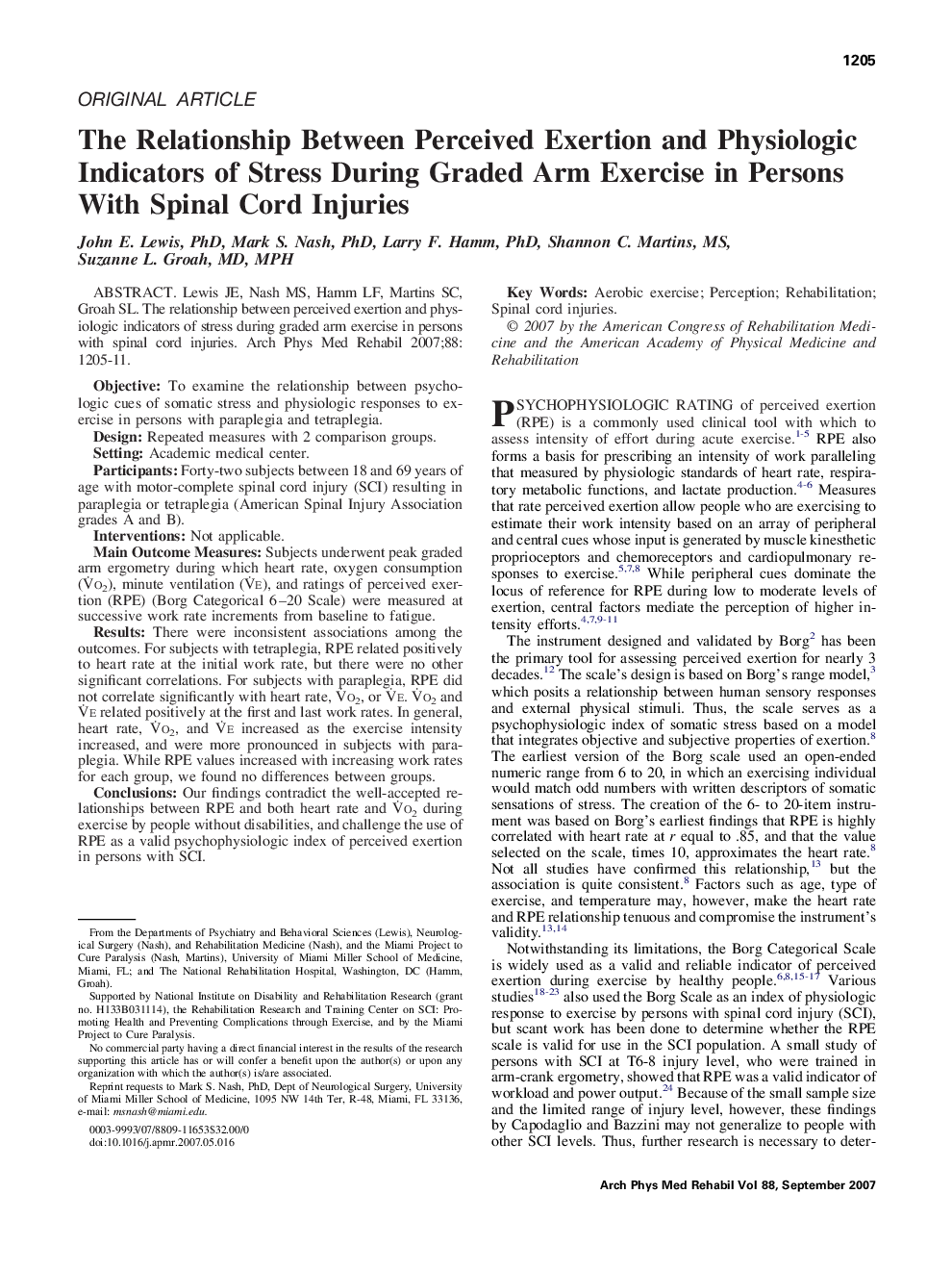| کد مقاله | کد نشریه | سال انتشار | مقاله انگلیسی | نسخه تمام متن |
|---|---|---|---|---|
| 3452780 | 1595789 | 2007 | 7 صفحه PDF | دانلود رایگان |

Lewis JE, Nash MS, Hamm LF, Martins SC, Groah SL. The relationship between perceived exertion and physiologic indicators of stress during graded arm exercise in persons with spinal cord injuries.ObjectiveTo examine the relationship between psychologic cues of somatic stress and physiologic responses to exercise in persons with paraplegia and tetraplegia.DesignRepeated measures with 2 comparison groups.SettingAcademic medical center.ParticipantsForty-two subjects between 18 and 69 years of age with motor-complete spinal cord injury (SCI) resulting in paraplegia or tetraplegia (American Spinal Injury Association grades A and B).InterventionsNot applicable.Main Outcome MeasuresSubjects underwent peak graded arm ergometry during which heart rate, oxygen consumption (V̇o2), minute ventilation (V̇e), and ratings of perceived exertion (RPE) (Borg Categorical 6–20 Scale) were measured at successive work rate increments from baseline to fatigue.ResultsThere were inconsistent associations among the outcomes. For subjects with tetraplegia, RPE related positively to heart rate at the initial work rate, but there were no other significant correlations. For subjects with paraplegia, RPE did not correlate significantly with heart rate, V̇o2, or V̇e. V̇o2 and V̇e related positively at the first and last work rates. In general, heart rate, V̇o2, and V̇e increased as the exercise intensity increased, and were more pronounced in subjects with paraplegia. While RPE values increased with increasing work rates for each group, we found no differences between groups.ConclusionsOur findings contradict the well-accepted relationships between RPE and both heart rate and V̇o2 during exercise by people without disabilities, and challenge the use of RPE as a valid psychophysiologic index of perceived exertion in persons with SCI.
Journal: Archives of Physical Medicine and Rehabilitation - Volume 88, Issue 9, September 2007, Pages 1205–1211